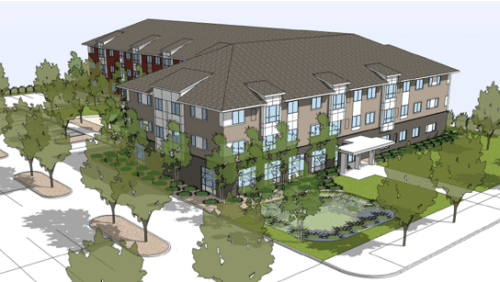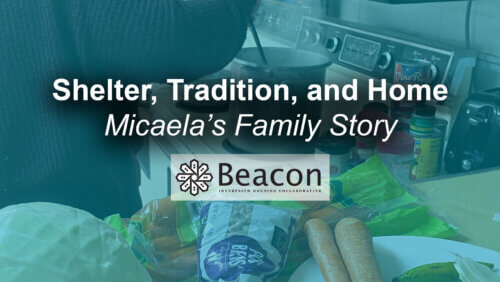Fear and Faith
by Dennis Sanders, Content Specialist
Why is there resistance to affordable and supportive housing? For Cindy Hillger, the root of resistance is anxiety in the unknown. “Fear is the biggest thing,” she says.
Cindy, a Deacon at St. Martin’s By-the-Lake Episcopal Church in Minnetonka Beach, knows this through participating in two Campaign Action Teams to launch Cranberry Ridge and Vista 44. Campaign Action Teams coordinate the strategy and ongoing tactics in congregations to make potential projects become a reality.
Cindy joined the Cranberry Ridge Campaign Action Team through an acquaintance at Wayzata Community Church. Wayzata Church led the effort to get affordable housing built somewhere in the west metro. “So we were the first congregation after Wayzata Community Church launch, to sign on,” Cindy says.
The Campaign Action Team worked on trying to find a place for this potential new project. They looked at cities such as Long Lake, Wayzata and Orono. “We met with quite a bit of resistance,” Cindy remembers. Sometimes she could tell the minute they walked in the room that an official was not interested. “I’ve lived out in that area for a long time. And it was disconcerting to have people that I voted for, and just be very negative about the whole thought of it.”
While there was resistance in other communities in the west metro, one city expressed some interest. “We sat down with some of the folks in Plymouth and realized that there was land, there was generally some goodwill on the part of the city. And we just decided to dig in, and work hard to get Cranberry Ridge built in Plymouth.”
The goodwill was not without difficulties. Some on the Plymouth City Council were either outright opposed to Cranberry Ridge or kept their decision close to their vests. “We plugged away. I think we met with individual council members up to three different times.”
Cindy thinks the reason for the resistance in Plymouth and other communities stems from not understanding the kind of homes Beacon would build. “It’s that fear of what to expect because we just don’t have a lot of family supportive housing in the far western suburbs,” she says. “It’s easier to say no to something than to really sit down and work through these issues.”
The Campaign Action Team took a number of councilmembers from Plymouth on a tour of Creekside Commons, in Minneapolis. The tour had an effect. “I think we turned the corner with one of the council people when they did go to Creekside and they saw this is a really vibrant, clean, maintained, happy place.”
How did Cindy feel when Cranberry Ridge came before the City Council in November 2017? “Really scared,” she laughs. Cindy was nervous because a yes vote was not assured. “We knew a couple of them were likely to vote no. The neighborhood opposition was very vocal that night.” However, more than 200 supporters from St. Martin’s, Wayzata Community Church and other congregations in the collaborative were there decked out in cranberry red to lend their voices in favor. They came forward to talk about how important housing is for a society to function well. “We believed housing is the foundation of healthy families and healthy communities and that everyone deserved the right to live in a clean, safe place to call home.”
For three years, Cindy and the other members of the team worked to get not just the city council, but congregations and clergy on board as well. The hard work paid off when the Plymouth City Council voted in favor. “I’ll never forget it, it was stunning,” Cindy recalls. “We had worked so long and so hard. To see that sea of cranberry red in that room was a really powerful statement. It just showed us what you can do with faith and the power of congregations.”
Cindy’s work wasn’t done. She volunteered on another Campaign Action Team, this time for what will become Vista 44. The process this time was different than the one for Cranberry Ridge. For starters, Vista 44 will be built on land that St. Gabriel the Archangel Catholic Church, a Beacon congregation in Hopkins, is selling to the collaborative. It also helps that the city has some familiarity with this kind of housing. “Hopkins has some affordable housing already. So this isn’t a foreign concept to them.”
For Cindy, it’s still early in the process to know what the potential challenges will be to make Vista 44 a reality. But she knows there will be challenges. “Will there be opposition? Yes. Will it be organized? I’m not sure yet. It’s almost too early to tell.”
Cindy has spent time easing the fears of local leaders because she wants to ease the fears of children experiencing homelessness. “They need a house, they need a home. They need a bed, they need a blanket, they need a place to be every night. And they need an address. Kids need addresses.”


